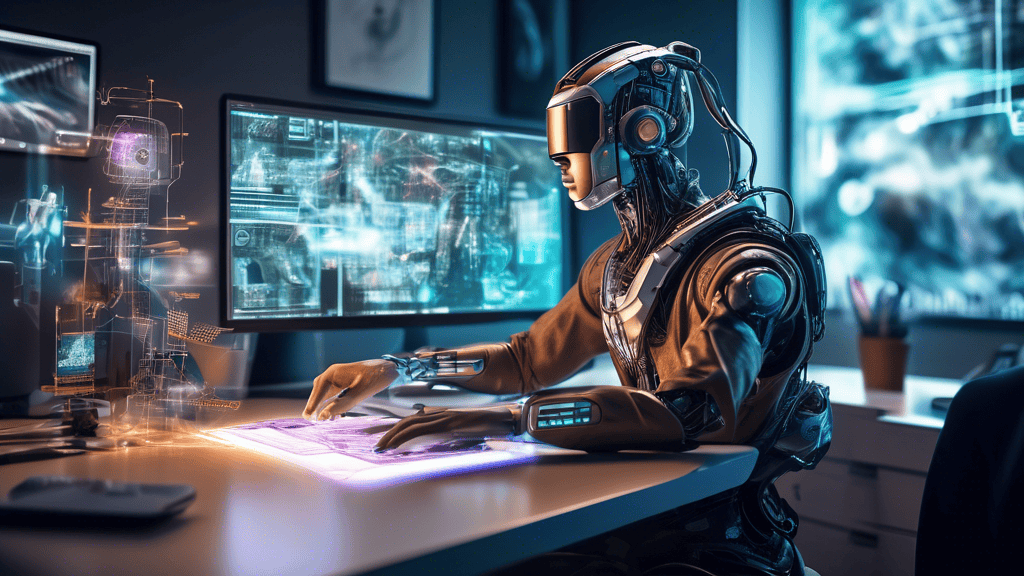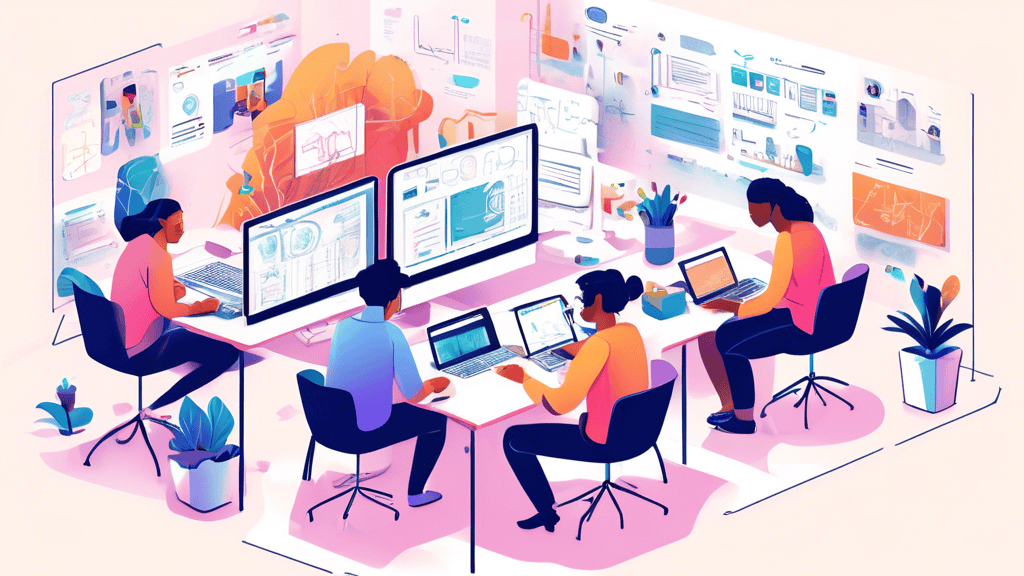AI design tools have become essential resources for creative professionals, significantly transforming how design work is approached and executed. These innovative tools harness the capabilities of artificial intelligence to streamline processes, inspire creativity, and enhance overall productivity. By automating repetitive tasks and providing intelligent suggestions, AI design tools empower users to focus more on the creative aspects of their projects.
Emerging trends in AI and design technology are further shaping the landscape, making these tools increasingly sophisticated and accessible. From intuitive graphic design applications to advanced generative design software, these tools are not just enhancing the workflow but also expanding the boundaries of what’s possible in design. In this article, we’ll explore the top AI design tools available today, analyzing their features, benefits, and ideal use cases. Whether you’re a seasoned designer or just starting, understanding these ai tools can provide a significant advantage in your creative endeavors.
Introduction to AI Design Tools
AI design tools are software solutions that leverage artificial intelligence to enhance the creative process for designers, artists, and marketers. By analyzing vast amounts of data, these tools can offer insights, generate design options, and streamline workflows. They have become increasingly significant in the creative industry as they allow for more efficient ways of working, enabling professionals to stay competitive in a fast-paced environment.
AI enhances design processes in several ways. With capabilities such as automation, machine learning, and deep learning, these tools can process creative tasks that traditionally required human intervention. For example, AI can generate design variations, suggest color palettes, and even craft entire branding elements based on user inputs and historical data. This capability fosters creativity by removing some of the repetitive elements of design work, allowing designers to focus on more conceptual tasks.
Emerging trends in AI and design technology are showing promising advancements. For instance, generative design tools are gaining traction, where algorithms create design options based on specified parameters, pushing the boundaries of what’s possible in creative expression. Additionally, user-friendly interfaces and improved accessibility mean that these tools are not just for tech-savvy experts, but for anyone looking to enhance their design capabilities.
Overall, AI design tools represent a significant shift in the creative industry, redefining how design work is conceived and executed. As more professionals incorporate these technologies into their workflows, the design landscape will likely continue to evolve in exciting ways.

## Top AI Design Tools for Creative Professionals
### Tool 1: Adobe Sensei
Adobe Sensei enhances various Adobe applications by leveraging AI capabilities. It automates repetitive tasks and suggests design elements, freeing up time for creative exploration.
– **Features**: This tool includes content-aware fill, intelligent tagging, and automatic image enhancement. It streamlines workflows in Photoshop and Illustrator.
– **Benefits**: Users experience faster project completion and improved accuracy in design choices. The AI also learns from individual user preferences, adapting to personal styles.
– **Ideal Use Cases**: Perfect for graphic designers and photographers who need efficiency in image processing and creative projects.
### Tool 2: Canva Magic Design
Canva’s Magic Design feature utilizes AI to aid non-designers in creating professional-looking graphics quickly. This user-friendly option makes design accessible to everyone.
– **User Experience**: The interface is intuitive, allowing users to drag and drop elements easily. Templates are customizable, making it straightforward to develop unique designs.
– **Pricing**: Canva offers a free version with essential features, while the Pro plan unlocks advanced tools and assets at an affordable monthly rate.
– **Accessibility**: Being web-based means it can be accessed anywhere, making it ideal for remote teams and individuals.
### Tool 3: Figma with AI Plugins
Figma is a versatile design tool popular among UI/UX designers. It supports a collaborative design environment and has multiple AI-powered plugins.
– **Integrations**: Figma integrates seamlessly with tools like Slack and Trello, enhancing team collaboration and project management.
– **Community Support**: It has a vibrant community offering templates and plugins, allowing users to share innovations and ideas.
– **Unique Functionalities**: AI plugins can suggest design layouts and bionic visuals that evolve based on user feedback.
### Comparative Analysis
When selecting an AI design tool, it’s essential to consider individual strengths and weaknesses.
– **Adobe Sensei** excels in rich features tailored to professional users. However, its complexity can overwhelm beginners.
– **Canva Magic Design** shines for ease of use and accessibility, making it fantastic for quick designs. The limitation lies in its lack of advanced features found in more professional tools.
– **Figma** stands out for its collaborative capabilities and plugin ecosystem. However, it may require a steeper learning curve for those unfamiliar with web-based design tools.
Identifying the right tool depends on your specific design needs, whether you’re a beginner looking for simplicity or an expert requiring a robust design platform.

Choosing the Right AI Design Tool for Your Needs
When selecting an AI design tool, several factors can influence your decision. Understanding these criteria will help you align the tool with your specific design projects. Here are the key aspects to consider:
Functionality and Features
Evaluate what functionalities the AI design tool offers. Look for features that match your needs, such as:
– Image generation capabilities
– Graphic editing tools
– User-friendly interfaces
– Automation features for repetitive tasks
– Collaboration tools for team projects
Consider what specific tasks you want to accomplish and choose a tool that supports those functionalities.
User Experience
A tool’s user experience can significantly impact your workflow. When assessing user experience, keep in mind:
– Ease of navigation
– Intuitive design
– Availability of tutorials and support documentation
– Customization options
A seamless user experience allows you to focus more on creativity rather than learning curves, making the design process smoother.
Budget
Consider your budget when selecting an AI design tool. Many have different pricing tiers or subscription models. Some points to review include:
– Free trial availability
– Monthly versus annual payment options
– Cost versus features
Investing in a tool that fits your budget while still meeting your needs is crucial. Take advantage of trials to determine if the tool is worth the investment.
Integration Capabilities
Compatibility with other software can enhance your design process. Check if the AI design tool integrates well with:
– Graphic design software (like Adobe Creative Suite)
– Project management tools (such as Trello or Asana)
– File storage platforms (like Google Drive or Dropbox)
Integrations can streamline your tasks, making it easier to transfer files and ideas between different platforms.
Community Support
Having access to a community or support network can be invaluable. You should consider:
– Active user forums and online communities
– Availability of customer support
– Online resources for troubleshooting
A strong community can provide insights, tips, and solutions to problems you might encounter, enhancing your overall experience with the tool.
Tips for Maximizing Productivity and Creativity with AI Design Tools
Once you’ve selected the right AI design tools, it’s essential to use them effectively. Here are some strategies to enhance productivity and creativity:
Learn the Tool Inside and Out
Invest time in familiarizing yourself with all the features the AI design tool offers. Participate in workshops or webinars, and engage with tutorials. Understanding the tool fully will allow you to leverage its capabilities to the max.
Experiment with Features
Don’t hesitate to try out different features and functions within the tool. Experimentation can lead to discovering unique ways to enhance your designs. Play with various options to see which resonates best with your creative style.
Stay Updated
Keep an eye on updates and newly released features. AI design tools often evolve quickly, and staying updated will ensure you can take advantage of the latest advancements. Subscribe to newsletters or follow the tool’s social media pages for prompt updates.
Foster Collaboration
If you’re part of a team, encourage collaboration using the AI design tool. Utilize features that enable feedback and sharing within your group. Collaborative efforts usually lead to richer, more diverse design outcomes.
Engage with the Community
Get involved with online communities associated with your chosen AI design tool. Participating in forums and discussions can provide valuable insights and tips that could make your design process more efficient. Sharing experiences with others often opens the door to new techniques.
Future Outlook: AI Design Tools Evolution
The landscape of AI design tools continues to refine and innovate. Here are some trends to watch for in the future:
Greater Personalization
AI will continue to evolve, leading to tools that can offer even more personalized experiences. Expect more user-centric features driven by data analytics that tailor designs based on individual preferences and styles.
Improved Automation
Automation is set to become more sophisticated, allowing for broader application in tasks like layout generation, color combinations, and image adjustments. These enhancements will save time and allow creatives to focus on conceptual aspects of design.
Integration of Machine Learning
The incorporation of machine learning might provide deeper insights into design trends and audience preferences. Tools could adapt and learn from user behaviors, suggesting designs that resonate better with target demographics.
Enhanced Collaboration Tools
As remote work becomes increasingly common, expect AI design tools to enhance collaboration features. Future iterations may allow real-time feedback and changes, making teamwork more efficient.
Ethical AI Use
With advances come responsibilities. The conversation around ethical AI use is likely to grow, influencing how design tools are developed and deployed. Expect to see features that promote responsible usage, copyright considerations, and transparency in AI-generated designs.
Selecting the right AI design tool can empower your creative journey and enhance the quality of your work significantly. By considering your specific needs, exploring functionalities, and keeping abreast of future trends, you’re well on your way to becoming more productive and innovative in your design efforts.
AI design tools have become indispensable assets for creative professionals, revolutionizing how ideas are brought to life. Each tool offers unique features and functionalities tailored to various design tasks, making it crucial to understand their capabilities before making a choice. Evaluating these tools based on personal project requirements will help clarify the best fit for individual needs.
As you move forward in your design journey, consider the balance between innovation and functionality that each AI design tool provides. Embracing these tools can enhance your productivity and open up new avenues for creativity. Staying updated with the latest trends and developments in AI technology will also empower you to leverage the capabilities of these tools fully.
By choosing the right AI design tool, you’re not just enhancing your workflow; you’re also investing in your creative potential. As the landscape continues to evolve, those who adapt and integrate AI into their design processes will likely stay ahead in an increasingly competitive industry. The future of design looks promising, with AI at the forefront, ready to inspire and transform how we create.
